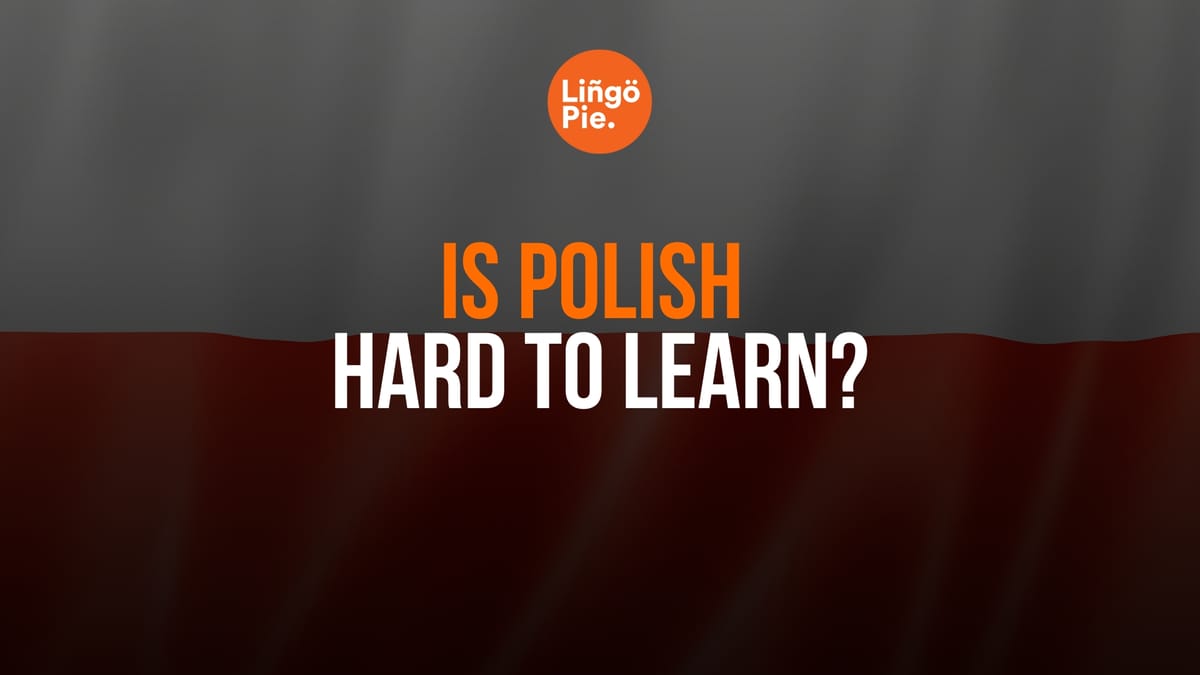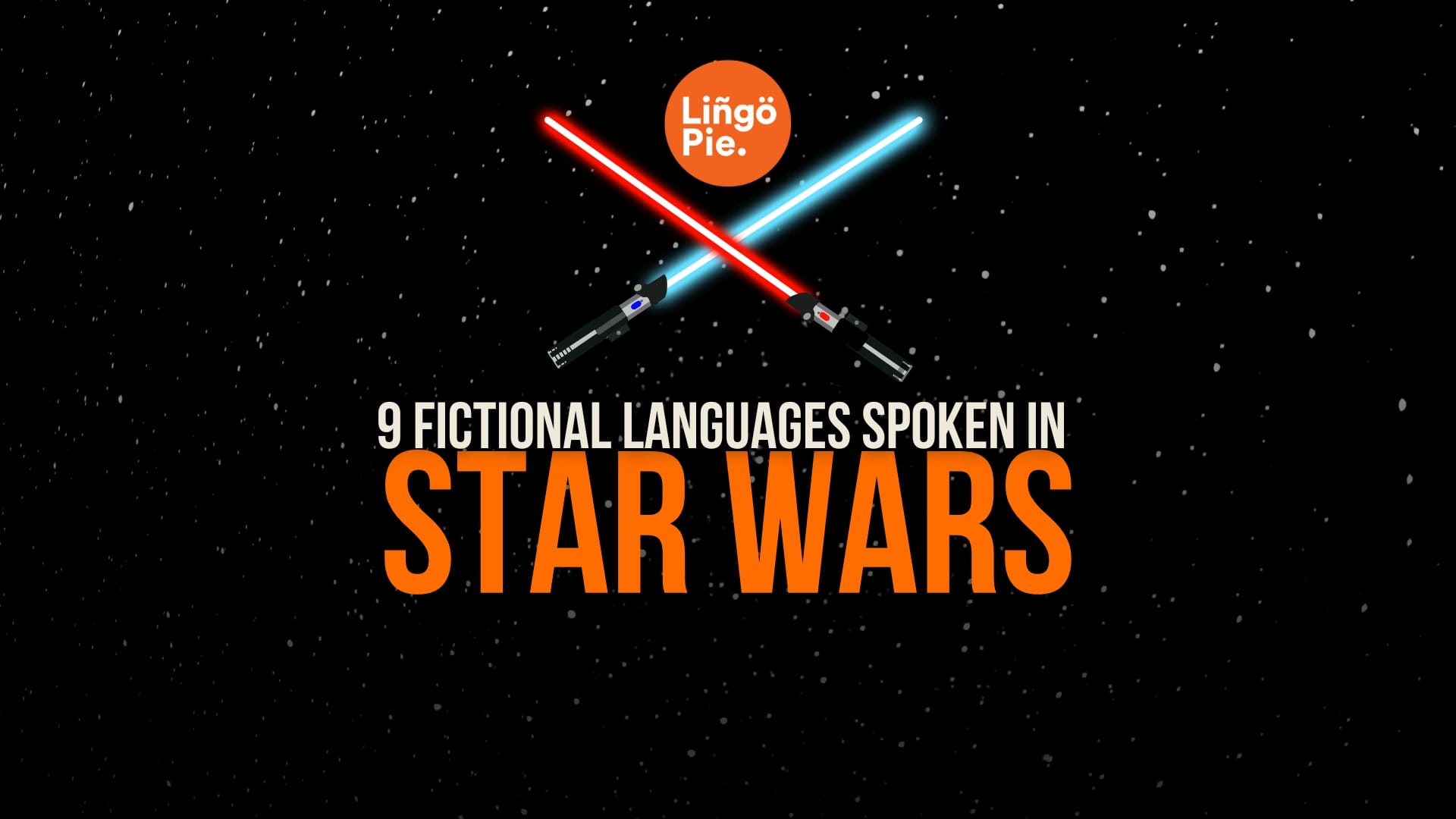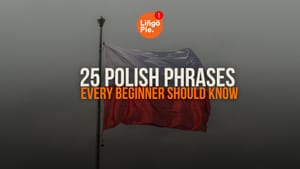Learning a new language always presents challenges, and Polish has developed quite a reputation for its difficulty. But is learning Polish truly as challenging as many claim? Let's dive deeper into what makes Polish challenging and where you might find unexpected ease in your learning journey.
- 60+ Surprising Italian Words Used In English
- Hardest Words In Spanish: 14 Pronunciation Nightmares
- 15 Dutch Jokes You Need To Understand When Learning Dutch
How Difficult Is Polish Compared to Other Languages?
Polish is classified as a Category III language by the U.S. Foreign Service Institute (FSI), placing it among the more challenging languages for native English speakers to learn. The FSI estimates it takes approximately 1012 hours or 44 weeks of intensive study to reach professional working proficiency in Polish, compared to around 552-690 hours for Category I languages like Spanish or French.
This classification is based on several factors, including linguistic distance from English, grammatical complexity, and pronunciation differences. Polish, as a Slavic language, operates on fundamentally different linguistic principles from English's Germanic roots.

What Makes Polish Grammar So Challenging?
The Case System
One of the most intimidating aspects of Polish grammar is its seven grammatical cases. Each case changes the ending of nouns, adjectives, and pronouns based on their function in the sentence:
- Nominative (Mianownik): The subject form - "kot" (cat)
- Genitive (Dopełniacz): Expressing possession - "kota" (of the cat)
- Dative (Celownik): Indicating to whom/what - "kotu" (to the cat)
- Accusative (Biernik): The direct object - "kota" (the cat as object)
- Instrumental (Narzędnik): Expressing with/by - "kotem" (with the cat)
- Locative (Miejscownik): Indicating location - "kocie" (about the cat)
- Vocative (Wołacz): Used for direct address - "kocie!" (Hey, cat!)
In English, we'd use the same word "cat" in all these sentences and rely on prepositions and word position to show meaning. In Polish, the word itself changes form. What's more, every noun follows different patterns based on its gender and ending.
Consider how the English sentence "I gave the book to my friend" simply adds the preposition "to" before "friend." In Polish, this becomes "Dałem książkę mojemu przyjacielowi" where both "mój przyjaciel" (my friend) change their endings to show the dative case.
Grammatical Gender
While English only uses gender for pronouns (he/she/it), Polish assigns one of three genders to every noun: masculine, feminine, or neuter. This gender affects:
- The ending of the noun itself
- Any adjectives describing the noun
- Pronouns referring to the noun
- Past tense verbs associated with the noun
- Numerals used with the noun
For example, in English "The new car was expensive" has the same form regardless of the gender of "car." In Polish:
- "Nowy samochód był drogi." (masculine)
- "Nowa książka była droga." (feminine)
- "Nowe krzesło było drogie." (neuter)
Everything in the sentence changes with gender. To complicate matters further, masculine nouns are subdivided into personal (men), animate (animals), and inanimate (objects) categories, each with different declension patterns.
For instance, "I see" with different objects:
- "Widzę mężczyzn" (I see men) - masculine personal
- "Widzę koty" (I see cats) - masculine animate
- "Widzę domy" (I see houses) - masculine inanimate
Verb Aspects
Polish verbs exist in pairs that distinguish whether an action was completed (perfective) or ongoing/habitual (imperfective). English approximates this with tenses, but Polish uses entirely different verb forms:
- "Pisałem list" (I was writing a letter) - imperfective, focus on the process
- "Napisałem list" (I wrote/completed a letter) - perfective, focus on completion
The challenge for English speakers is that these aren't simply different tenses but completely different verbs that must be learned as pairs. Often the perfective is formed by adding a prefix to the imperfective, but the prefixes aren't consistent:
- "czytać" → "przeczytać" (to read)
- "pisać" → "napisać" (to write)
- "robić" → "zrobić" (to do/make)
This means that for nearly every action, you effectively need to learn two verbs. English has no direct equivalent to this system, which uses tense structures like present perfect or past continuous to express similar meanings.

Is Polish Pronunciation Really That Difficult?
Consonant Clusters
Polish is infamous for its consonant clusters that can seem impossible to pronounce for English speakers. While English has some consonant clusters (like "str" in "string" or "spl" in "splash"), Polish takes this to another level by allowing sequences of 4-5 consonants without intervening vowels.
Compare these examples:
- English: "strength" (3 consonants: str-)
- Polish: "wstrząs" (5 consonants: wstrz-) meaning "shock"
The Polish language permits consonant combinations that English speakers' mouths aren't trained to articulate without adding vowels between them:
- "Szczęście" (happiness) - contains "szcz" (pronounced roughly like "sh-ch" together)
- "Bezwzględny" (ruthless) - begins with "bzw" with no vowels between
- "Przepraszam" (excuse me/sorry) - begins with "prz" which is a single sound unlike anything in English
- "Chrząszcz" (beetle) - contains both "ch" and "szcz" consonant combinations
The famous Polish tongue twister: "W Szczebrzeszynie chrząszcz brzmi w trzcinie" (In Szczebrzeszyn, a beetle buzzes in the reed) contains multiple challenging clusters: "szcz," "brz," "szcz," "brzm," and "trz" all in one sentence!
English speakers often attempt to insert vowels between these consonant clusters (saying "suh-ch" instead of "szcz") or simply mispronounce them entirely. Training your mouth to produce these combinations without these "helper vowels" is a significant challenge.
Special Characters And Sounds
Polish contains several sounds that have no equivalent in English, requiring English speakers to develop entirely new muscle movements in their mouth, tongue, and throat:
- Nasal vowels: "ą" and "ę" (similar to French nasal sounds)
- Palatalized consonants: "ć", "ś", "ź", "ń" (soft sounds)
- The letter "ł" (pronounced like English "w")
- Digraphs like "cz", "sz", "rz", which represent single sounds
What makes this particularly challenging is that these letters and combinations can appear adjacent to each other, creating compounds like "szcz" (a combination of "s" + "cz") or "prz" that require precise tongue and lip positions.
What Makes Polish Easier Than You Might Think?
Phonetic Spelling
Unlike English with its irregular spelling patterns, Polish is highly phonetic. Once you learn the pronunciation rules, you can correctly pronounce virtually any word you see written. Each letter consistently represents the same sound, with very few exceptions.
For example, compare English "though," "through," "tough," and "thorough" with their wildly different pronunciations despite similar spellings. Polish doesn't have these inconsistencies.
Familiar Alphabet Base
While Polish has additional letters with diacritical marks (like ą, ę, ł, ń, ó, ś, ź, ż), it uses the Latin alphabet as a base, making it significantly easier to learn than languages using completely different writing systems like Mandarin, Japanese, or Arabic.
Flexible Word Order
Polish has a more flexible word order than English due to its case system. While the standard order is Subject-Verb-Object (SVO), the meaning is primarily carried by the case endings rather than word position. This flexibility can be liberating once you grasp the case system.
Polish Vocabulary
Latin and International Roots
Many Polish words have Latin roots or are international terms, making them recognizable to English speakers:
- "Telefon" (telephone)
- "Matematyka" (mathematics)
- "Informacja" (information)
- "Restauracja" (restaurant)
Slavic Roots and Word Formation
However, many common everyday words come from Slavic roots that will be completely unfamiliar to English speakers:
- "Dzień dobry" (good day/hello)
- "Dziękuję" (thank you)
- "Przepraszam" (sorry/excuse me)
Polish also forms new words through prefixes and suffixes, which is a systematic approach that helps vocabulary building once you learn the patterns.
So, Is Polish Hard To Learn?
After examining the various aspects of the Polish language, the answer to whether Polish is hard to learn is: yes, it presents significant challenges for English speakers—but with an important caveat.
Polish is objectively difficult due to its complex grammar system, unique pronunciation, and substantial differences from English. The combination of seven cases, three genders, consonant clusters, and novel sounds creates a steep learning curve that can't be denied. The FSI's classification of Polish as a Category III language requiring 1,000+ hours of study confirms this difficulty.
However, "difficult" doesn't mean "impossible" or even "not worth attempting." My advice? Learning Polish should be approached with realistic expectations:
- The first 6-12 months typically feel the most challenging as you adapt to the new grammatical concepts.
- You'll experience periods of rapid advancement followed by plateaus where progress seems to stall.
- You can have meaningful conversations in Polish long before mastering all seven cases or perfect pronunciation.
- Regular exposure to Polish through media, conversation partners, or visits to Poland dramatically improves acquisition speed.
Ready to Take On the Polish Challenge?
If you're excited to explore this rich Slavic language, you'll be thrilled to know that Lingopie is launching Polish content soon! By combining authentic Polish media with interactive learning features, Lingopie offers a perfect solution for tackling those tricky consonant clusters, mastering the case system through natural context, and building vocabulary through engaging content.
Rather than struggling through textbooks alone, you'll soon be able to immerse yourself in Polish movies, shows, and more – turning the challenging aspects of Polish into an enjoyable adventure rather than a daunting obstacle.
Keep an eye out for our Polish launch and prepare to experience a language learning approach that transforms difficulty into discovery.





![Language Difficulty Ranking For English Speakers [2025]](/blog/content/images/size/w1200/2025/05/Language-Difficulty-Ranking----For-English-Speakers.png)


![5 Best Apps To Learn Polish As A Beginner [2025]](/blog/content/images/size/w300/2025/08/best-apps-to-Learn-Polish.jpg)
![What’s The Best Way To Learn Polish Quickly? [Guide]](/blog/content/images/size/w300/2025/08/What-s-The-Best-Way-To-Learn-Polish-Quickly.jpg)